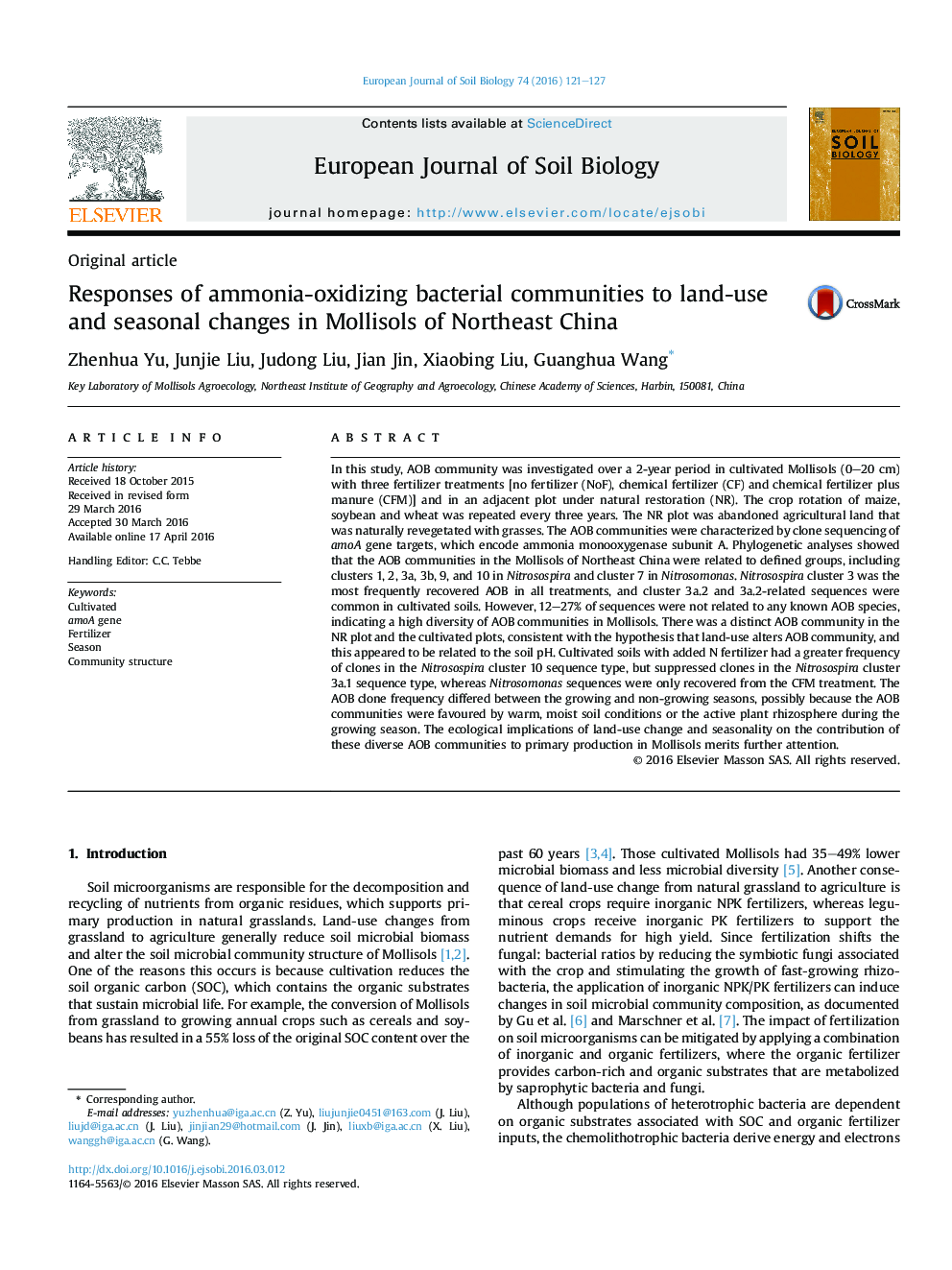| کد مقاله | کد نشریه | سال انتشار | مقاله انگلیسی | نسخه تمام متن |
|---|---|---|---|---|
| 4391708 | 1618118 | 2016 | 7 صفحه PDF | دانلود رایگان |
• Mollisols support a highly diversity in AOB communities with the detection of seven identified clusters and three novel ones.
• Land-use alters AOB community diversity and fertilization modulates the AOB community structure of cultivated plots.
• AOB communities have seasonal variability which may relate with the changes of soil environment and active plant growth.
In this study, AOB community was investigated over a 2-year period in cultivated Mollisols (0–20 cm) with three fertilizer treatments [no fertilizer (NoF), chemical fertilizer (CF) and chemical fertilizer plus manure (CFM)] and in an adjacent plot under natural restoration (NR). The crop rotation of maize, soybean and wheat was repeated every three years. The NR plot was abandoned agricultural land that was naturally revegetated with grasses. The AOB communities were characterized by clone sequencing of amoA gene targets, which encode ammonia monooxygenase subunit A. Phylogenetic analyses showed that the AOB communities in the Mollisols of Northeast China were related to defined groups, including clusters 1, 2, 3a, 3b, 9, and 10 in Nitrosospira and cluster 7 in Nitrosomonas. Nitrosospira cluster 3 was the most frequently recovered AOB in all treatments, and cluster 3a.2 and 3a.2-related sequences were common in cultivated soils. However, 12–27% of sequences were not related to any known AOB species, indicating a high diversity of AOB communities in Mollisols. There was a distinct AOB community in the NR plot and the cultivated plots, consistent with the hypothesis that land-use alters AOB community, and this appeared to be related to the soil pH. Cultivated soils with added N fertilizer had a greater frequency of clones in the Nitrosospira cluster 10 sequence type, but suppressed clones in the Nitrosospira cluster 3a.1 sequence type, whereas Nitrosomonas sequences were only recovered from the CFM treatment. The AOB clone frequency differed between the growing and non-growing seasons, possibly because the AOB communities were favoured by warm, moist soil conditions or the active plant rhizosphere during the growing season. The ecological implications of land-use change and seasonality on the contribution of these diverse AOB communities to primary production in Mollisols merits further attention.
Journal: European Journal of Soil Biology - Volume 74, May–June 2016, Pages 121–127
